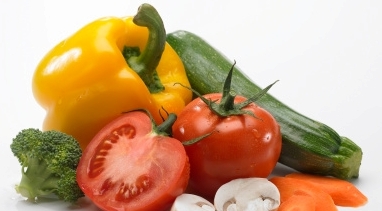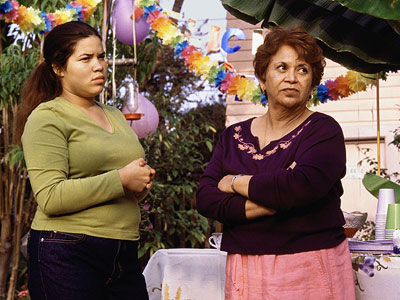How to Reduce Fat Without Doing Exercise
Stop hating yourself for not going to the gym! While exercise is certainly important for health, the best starting point for losing weight is changing what you eat. Here's a few suggestions to help jump start your weight loss without doing a single leg lift.
Steps
Part 1 Getting Better Calories
The most powerful thing you can do to lose weight is to eat better.The principle behind losing weight through changing what you eat is still cutting calories, but this doesn't have to involve drastic portion control or a whole lot of calorie counting. The trick is to cut down on foods that have a lot of calories while giving your body little in return.
-
1
Start eating natural, unprocessed foods, such as fruits, vegetables, healthy meats and fish. Much of the food in grocery stores and fast food restaurants is highly processed to make it cheaper to produce and extend its shelf life. This processing often cuts out essential nutrients, and changes the food composition in ways that make you get fat.
- Stick to the outside aisles at the grocery store. An easy way to eat better is to shop on the outside aisles, where the fresh foods are kept, and avoid the shelves in the middle where everything is preserved and processed.
- Learn to read food labels. Reading the small print on food packaging will help you tell the difference between food that is really good for you and clever food marketing. A lot of "healthy" food products make claims that are deliberately misleading in order to trick consumers into buying them.
- Check the serving size. Sometimes foods will advertise being low in fat or sugar, and the numbers in the nutritional guide will appear low, but the serving size will be far smaller than a normal serving.
- Look at the overall healthfulness of the food, not just an isolated health claim. Many foods claim to be high in fiber, but are also extremely high in sugar and other refined carbohydrates. This makes the food fattening even if it is advertised as healthy.
-
2
Avoid empty calories, like those in candy, junk food, and soda. Again, these have very low nutritional value, and and have a lot of calories packed into small serving sizes.
- Be especially wary of refined carbohydrates. These are notorious for causing obesity. Anything that contains flour or sugar (glucose, fructose, sucrose) is going to be stored in your body as fat.
- Refined carbohydrates can also trigger changes in your body that make your metabolism less efficient.
- Sugar can also cause cravings that make you want even more of it later.
- Make water your drink of choice. It contains no calories, aids digestion, and can also help flush metabolism-slowing toxins from your system.
- Sugary drinks, such as soda or even fruit juice contain a lot of carbohydrates, and therefore add to weight gain.
- Diet sodas, though they claim to contain few or no calories, have sweeteners in them that also promote weight gain, and are possibly toxic. [1]
- Be especially wary of refined carbohydrates. These are notorious for causing obesity. Anything that contains flour or sugar (glucose, fructose, sucrose) is going to be stored in your body as fat.
-
3
Don't be afraid of healthy fat such as those found in olive oil, avocados, nuts, and fish. Getting up to 40% of one’s calories from healthy sources of fat is acceptable, especially if this is replacing refined carbohydrates in your diet.[2] This contrasts from the low-fat diets of the 80's and 90's, many of which have been proven ineffective.
- Beware of products that are low-fat. Just because something is low in fat, it doesn't mean it's not fattening. Lots of low fat products are loaded with sugar and other refined carbohydrates that will turn into fat in your body once you eat them.
- Avoid trans fats. Trans fats such as hydrogenated oils are made by manipulating the chemical structure of natural oils and turning them into something that is completely alien to your body. These not only cause weight gain, but are also implicated in illnesses like heart disease.[3]
- Limit saturated fat to no more than 10% of your daily food consumption. Recent research has shown that saturated fats such as those found in butter and red meat are not as bad as previously thought, but most mainstream nutritional guides suggest that it may raise LDL or "bad" cholesterol levels.[4]
Part 2 Reinforcing your Willpower
-
1
Don't make yourself feel deprived. The worst thing you can do for your motivation is to feel like you're depriving yourself. Feeling deprived can make you feel anxious, and this can drive you to wards unconscious eating.[5]
- Don't starve yourself! There are plenty of health risks to not eating regular meals. Furthermore, if your body doesn't get enough to eat, the body prepares to survive what it thinks is a famine by going into "starvation mode" and storing extra fat.
- At first, add, rather than subtract food to your diet, and figure out what you like. Don't just focus on cutting out unhealthy foods. Find some new, healthy foods to try to start adding them to your eating routines. These foods will replace less healthy foods little by little until your overall food intake is a lot healthier.
-
2
If your willpower alone is not enough to resist eating unhealthy food, don't feel guilty! Just understand that you're going to have to be creative about sticking to your diet, even if your willpower fails.
- The impulse to eat is vital to survival, and throughout most of human history, the main problem has been getting enough to eat. Our brains and bodies have not yet adjusted to the modern surplus of food.
- Salt, sugar, and fat (and all the tasty, modern combinations of the three) are things that our bodies are designed to crave. Again, these were once scarce yet essential nutrients, so in many ways we are "programmed" to look for them. [6]
-
3
Make healthy eating convenient. We are faced with an overwhelming number of food decisions every day, so it helps to make healthy food the easiest option. Set up routines with your eating, and have healthy food accessible to you at all times.
- Have some standby snacks ready, such as nuts, carrot sticks or fruit for when you get hungry, and make them easier to access than the processed stuff (better still, make healthy food the only food in your house!).
- Have some healthy meals you can eat "by default" when you're not feeling too picky about what to eat, or when you need something quick and convenient. Instead of stocking up on instant noodles and PB&J, keep salad fixings or veggie casseroles on hand.
-
4
Record some data. Measure your waistline periodically, or get your body fat measured. Just the act of measuring your body is correlated to losing weight.[7]
- Keeping track of the results of your diet can be a great motivator.
- Remember that weight fluctuates a little each day, so don't get discouraged if the weight on your bathroom scale unexpectedly goes up a bit.
- 5 Get enough sleep. Research has shown that being sleepy can cause you to overeat. When you're sleepy you often go on autopilot, and might find that you have a much harder time making good decisions.[8]
Part 3 Using Mind Tricks on Yourself
It's surprising what can make us eat more. Sometimes, just the food's presentation or location in your house can actually affect how much of it you consume. Restaurants and food manufacturers use these tricks all the time to make you buy and eat more, so why not try using a few of their tricks in reverse?
-
1
Use smaller plates and taller glasses. Because of the way the brain processes visual information, the size of your dishes can affect how you decide how much food you're going to need to feel satisfied.[9]
- If your plates are a lot bigger than your food, you'll feel it isn't enough. Using smaller plates will require less food to make them appear full.
- Small, skinny glasses appear to hold more liquid than short, wide ones, even if they have the same volume. Use this optical illusion when you're drinking sweet drinks you want to limit.
-
2
Plan portions before eating. Most people's tendency is to finish whatever is put in front of them, even if they are already full, and food manufacturers know that people will buy and eat more if they are presented with bigger packages.
- Don't sit down with a huge bag of potato chips. Put a few in a bowl and stop when the bowl is empty.
- Repack mini portions of any snacks you buy in bulk.
- 3 Put less healthy food farther away from you. If you put your unhealthy favorites where they are harder to reach, you're much less likely to eat them without thinking. Even just taking things off your desk and putting them on the other side of the room can make a big difference.[10]
-
4
Eat with friends that eat less. When people eat socially, they often take cues from their companions about how much to eat. If there are people around you that eat a lot, try taking meals with people that eat less.
- If this is impossible or unpleasant, at least be aware of this tendency and notice how other people's eating affects you.
- If you tend to eat more when you're alone, try eating more meals around other people and see if this helps.[11]
- 5 Concentrate on what you're eating. If you're distracted while eating meals, because you're eating in front of the TV or while driving, you're far less likely to notice that you feel full or how much you have eaten. Be conscious of what you're eating and pay attention to the feelings in your body that tell you when you feel full, and you will eat less.
-
Lose Weight From Yoga
Do you know that you can lose weight from yoga? The complex canvas c
-
Weight Loss And Goals
Weight loss and goal setting are two inseparable things. I m sure yo
-
Criteria To Help You Choose the Right Diet.
2009 is going to be a great year for all those struggling with
-
Valerie Bertinelli 3 Years on Jenny Craig
Valerie Bertinelli Valerie Bertinelli has sure done well on Jenn
-
Craving Control 101
Cravings are actually all about the body’s blood sugar. Your eating p
-
4 Simple Ways To Spring Clean Your Kitchen
Adapted from Cut the Clutter, Drop the Pounds by Peter Walsh
- DON'T MISS
- 8 Healthy Diet Tricks That Dont Work
- Myth of Starvation Mode
- Walk Your Weight Off!
- Supported By Clinical Studies, This Flower Is NEW Weight Loss Weapon
- Red, Yellow, Green Light Foods
- Three Simple and Easy Steps to Quick Weight Loss!
- Differences Between Added Sugar and Natural Sugar
- How to Lose Weight for Good
- News Pulse: The Truth About Weight Gain
- How to Balance a Meal




